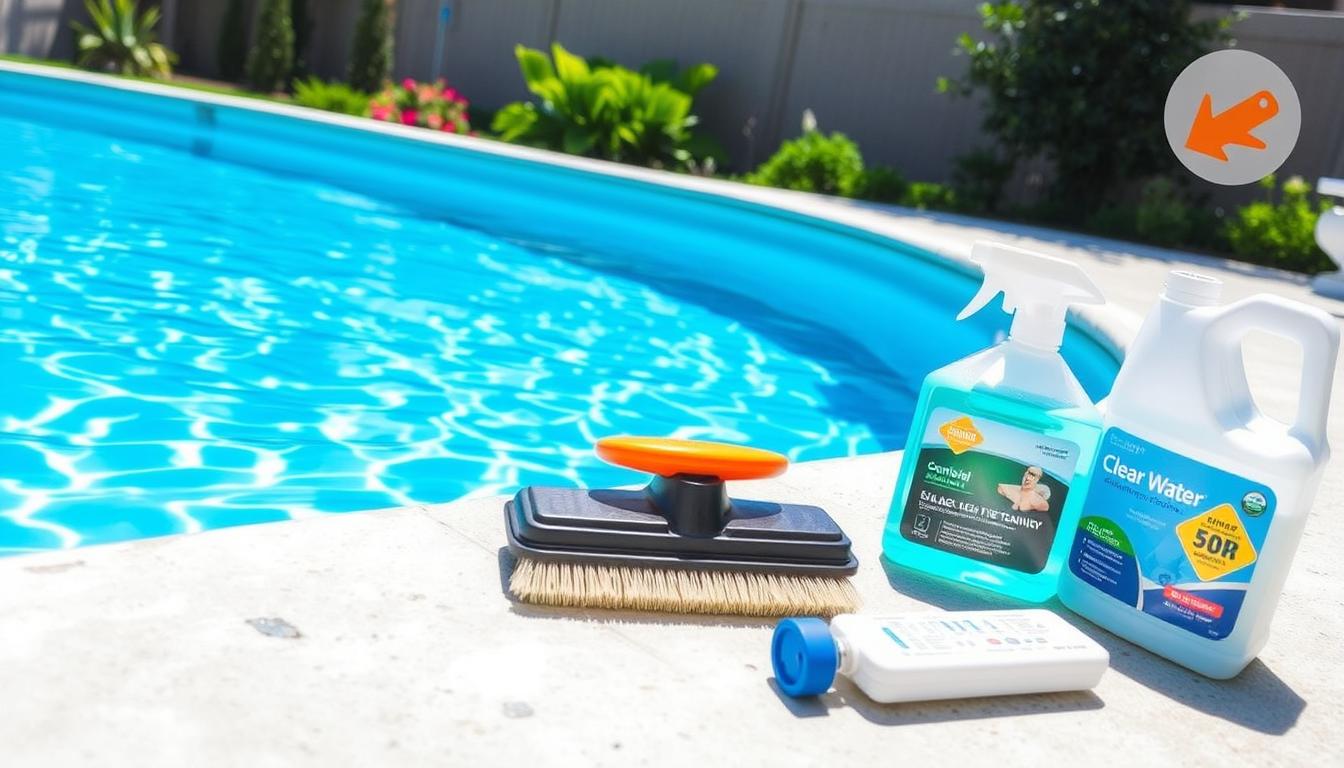
Imagine a hot summer day, perfect for a swim. But your pool is green and murky. Don’t worry! With the right know-how, you can keep your pool sparkling clean.
Proper maintenance prevents that disappointing green water. It’s easier than you might think to have a crystal-clear pool all season long.
Sun, rain, and high temperatures often cause algae problems. Faulty filtration is behind 80% of green water issues. But there’s good news! You can prevent green water with simple steps.
Maintaining proper water balance is key. This helps you enjoy a summer of pool fun without worries.
Regular pool care reduces the need for water changes. It also ensures great water quality all swimming season. Skimming and cleaning are important tasks.
Maintain proper chemical balance in your pool. Ensure effective filtration and circulation too. These steps prevent algae growth and keep your pool looking fantastic.
Maintaining Proper Chemical Balance
Keeping pool water clean requires proper chemical balance. Pool chemicals prevent harmful bacteria growth and ensure safe swimming. Regular testing and adjusting of water chemistry creates a healthy, enjoyable environment.
Testing Water Chemistry
Regular water chemistry testing is crucial for maintaining balance. Use a reliable pool water testing kit to check pH, chlorine, and alkalinity levels. Test at least weekly, or more often during heavy use or after bad weather.
Staying on top of water chemistry helps identify imbalances quickly. This allows for prompt action to prevent issues like algae growth or cloudy water.
Ideal pH and Chlorine Levels
Maintaining proper pH and chlorine levels keeps pool water clear and algae-free. The ideal pH range is 7.2 to 7.8, with 7.4 being optimal. Chlorine levels should be between 1 and 3 parts per million (ppm).
These levels effectively sanitize water and prevent harmful bacteria and algae growth.
| Parameter | Ideal Range | Frequency of Testing |
|---|---|---|
| pH | 7.2 – 7.8 | 1-2 times per week |
| Free Chlorine | 1 – 3 ppm | 2-3 times per week |
| Total Alkalinity | 80 – 120 ppm | 1-2 times per month |
Shocking Your Pool
We recommend shocking the pool weekly or after heavy use. This process adds a high dose of chlorine to eliminate contaminants. Shocking helps maintain water clarity and prevents harmful organism growth.
Follow manufacturer guidelines when shocking your pool. Allow about 24 hours for chemicals to dissipate before swimming.
“Proper pool maintenance is not just about aesthetics; it’s about ensuring the health and safety of our loved ones. By staying vigilant with water chemistry and regularly shocking the pool, we can create a clean and inviting environment for everyone to enjoy.”
How to Keep a Pool from Turning Green
Maintaining a crystal-clear pool requires proactive care. Focus on filtration, circulation, algaecide use, and water temperature. These steps prevent algae growth and ensure a healthy swimming environment.
Effective Filtration and Circulation
Proper filtration is key to a clean pool. Run your pool filter for at least 8 hours daily. Clean filters regularly to remove debris and maintain efficiency.
Backwash the filter as recommended by the manufacturer. This ensures optimal performance and prevents algae growth. Keeping your filtration system in top shape maintains proper water balance.
Regular Algaecide Use
Use pool algaecide to control algae growth. It works with chlorine to keep your pool water clear. Add algaecide weekly, following the manufacturer’s dosage instructions.
Make algae prevention part of your pool maintenance routine. This reduces the chance of your pool turning green.
Maintaining Optimal Water Temperature
High water temperatures create ideal conditions for algae growth. Keep your pool water between 78°F and 82°F. Use a pool cover to reduce evaporation and maintain consistent temperature.
Optimal water temperature minimizes algae growth risk. It also ensures a comfortable swimming experience for everyone.







